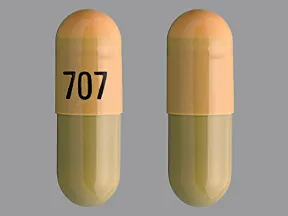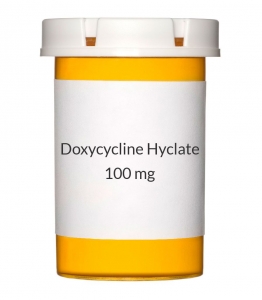
However, to the best of our knowledge and including our patient, reports providing details of the patients with doxycycline-associated hyperpigmentation have only been described in 18 individuals (Tables 1, 2).
Doxycycline mono 100mg skin#
They included skin discoloration (64 reports), skin hyperpigmentation (25 reports), and pigmentation disorders (19 reports). Our patient displayed hyperpigmentation not only within scars from acne but also on his dorsal hands.Īs of October 2014, databases such as the World Health Organization (WHO) and Eudraviligance (EMA) received 108 reports of discoloration due to doxycycline. The third type is pigmentation in areas that are sun-exposed and appears muddy-brown in nature. The second is the same type of pigmentation occurring on normal skin. The first type is blue-black pigmentation occurring within scars. Minocycline-induced skin hyperpigmentation has been described in three clinical variants. However, albeit less common, doxycycline can cause hyperpigmentation. Tetracyclines, and in particular minocycline, not only cause cutaneous pigmentation but also mucosal (including the sclera and tongue) and subungual pigmentation. ĭrug-induced hyperpigmentation has been associated with several classes of medications. Cutaneous adverse events associated with doxycycline have also been described, including morbilliform exanthem, photosensitivity, and rarely, skin and nail hyperpigmentation. These can be systemic such as such headaches, pseudotumor cerebri, and hand tremors. Additionally, there was no subungual or nail pigmentation.ĭoxycycline can be associated with various side effects. There was no hyperpigmentation of the mucosal membranes. In addition, there was hyperpigmentation on his bilateral dorsal hands between not only the second and third but also the third and fourth metacarpophalangeal joints (Figure 3). Skin hyperpigmentation was found in the areas of acne scars on both of his malar cheeks (Figures 2A, 2B). He denied any sun exposure.Ĭutaneous examination showed hyperpigmentation of the skin on his forehead, nose, bilateral temple regions, and both malar cheeks extending to his jaw (Figures 1A- 1C). However, after two weeks of treatment, he developed hyperpigmentation on his face and hands. He was pleased that all his acneiform lesions had cleared after two weeks of therapy. He returned for a follow-up evaluation after six weeks. In addition, once-daily topical therapy with benzoyl peroxide 5% gel and clindamycin phosphate 1% solution was also applied. Initial treatment included doxycycline monohydrate 100 milligrams twice daily. His facial lesions were diagnosed as adult acne. The treated areas of lichen simplex chronicus on the distal and proximal interphalangeal joints of his fingers had flattened. There were also acne scars on both cheeks. He currently was not using any topical or systemic medications.Ĭutaneous examination showed inflammatory papules on his forehead and bilateral malar cheeks. He also has a history of lichen simplex chronicus on his bilateral dorsal fingers, which had been successfully treated with fluocinonide 0.05% cream twice daily. During his teenage years, he suffered from severe facial acne, which was resolved using topical and systemic antibiotic therapy.

Case PresentationĪ healthy 40-year-old Hispanic man presented for evaluation of adult acne. Clinical features of individuals with drug-associated skin hyperpigmentation, nail discoloration, or both after starting treatment with doxycycline are reviewed. His skin darkening resolved after the drug was discontinued. Ī 40-year-old man developed cutaneous hyperpigmentation on his face and dorsal hands after beginning treatment with doxycycline for acne. Four types of mechanisms have been described in the literature in the pathogenesis of drug-induced pigmentation: accumulation of melanin, accumulation of the triggering medication, synthesis of special pigments, and deposition of iron. Tetracyclines, and in particular minocycline, are among the most common agents associated with drug-induced pigmentation. In patients with drug-associated hyperpigmentation, skin darkening can occur as the result of the drug alone or after sun exposure. They include melasma, vitamin deficiencies, and medications.


There are several potential etiologies that can result in hyperpigmentation. Hyperpigmentation is the darkening of the skin.

It is commonly used for short-term therapy in the treatment of acute infections, such as ones caused by methicillin-resistant Staphylococcus aureus, and in the long-term management of acne vulgaris. Its mechanism of action involves reversibly binding to the 30S ribosomal subunit to prevent bacterial protein synthesis. Doxycycline is an antibiotic agent that belongs to the tetracycline class.


 0 kommentar(er)
0 kommentar(er)
